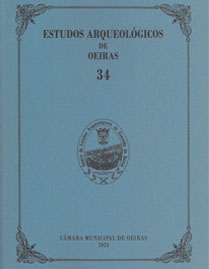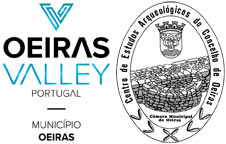Contribution to the definition of funerary practices of the Neolithic and Chalcolithic in the Estremadura Limestone Massif: the dolmen of Fonte Moreira (Alcanena) and orthostatic Megalithism in Upper Estremadura
DOI: 10.5281/zenodo.12732013
Keywords:
Megalithism, Neolithic‑Chalcolithic, Funerary practices, Estremadura Limestone MassifAbstract
During the excavation work conducted on the caves of Carrascos and Lapa da Galinha in the early 20th century, Félix Alves Pereira, curator of the Portuguese Ethnological Museum (current Portuguese Archaeological Museum), was informed about the existence of a megalithic monument located in the farmstead of Rabaçal (the same estate where the latter cave is also located), in Alcanena. Currently, the exact situation of this monument is not known – as it eventually could have been already destroyed. For its definition, one can only account for the archaeological materials collected therein during the excavation work conducted by Guilherme Gameiro in 1909, commissioned by Félix Alves Pereira, and currently housed in the Portuguese National Archaeological Museum (Lisbon). This paper, the fourth in the series Contributions to the definition of the Neolithic and Chalcolithic funerary practices in the Estremadura Limestone Massif, intends to present the study of those materials, whose techno‑typological features reveal two possible use episodes: a first one relative to the Late Neolithic/Early Chalcolithic (characterised by the association of typical flaked stone and polished stone tools); a second one already attributable to the Late Chalcolithic (characterised by the presence of a copper point integrated into the Palmela type). Therefore, the fundamental aim of this study is to frame these data within a phenomenon that is rather unusual in Upper Estremadura, such as orthostatic Megalithism, connecting it to other funerary manifestations documented in this area, mainly in karst cavities but also in hypogea, seeking to define the chrono‑cultural integration of the first moment of use of this tomb – reserving for another study the discussion regarding the subject of reusing megalithic tombs at the second half of the 3rd millennium BCE in South‑Central Portugal and the bell beaker presence in the Estremadura Limestone Massif.
Downloads
Published
How to Cite
Issue
Section
License
Os artigos publicados são da exclusiva responsabilidade dos Autores.
É expressamente proibida a reprodução de quaisquer imagens sobre as quais
existam direitos de autor sem o prévio consentimento dos signatários dos artigos
respectivos.




